Fuego Aftermath
The aftermath of the June 3rd eruption of Volcan de Fuego, just kilometres from our headquarters in Antigua, Guatemala, has been bewildering and painful for all of those affected, including those of us at SERES. The government has now ended the official search for victims of the disaster, though the eruption’s legacy looms as large as ever for those who managed to flee from the burning flow of gas and volcanic material which engulfed entire communities. Swathes of land which used to be home to entire communities have been deemed uninhabitable and high-risk by Guatemala’s disaster agency CONRED. Around 3,000 of those former inhabitants are now being housed in some 50+ makeshift shelters nearby.
Having conducted weeks of work on the front lines of the response, SERES, like the entire community around the volcano and further afield, must reflect on what has happened and what comes next. Indeed, SERES has been affected directly. The 25 acres of land on which we had planned to build the SERES Center – a youth-led campus to incubate designs for a more sustainable and equitable future for Central America – were near the path of the pyroclastic flow and, while relatively untouched, are at risk of being declared uninhabitable. 11 of the 3,000 young people which SERES has worked with since it was founded are amongst those missing, while some have heartbreakingly been found deceased. These were friends and colleagues, names and faces, something which the abstraction of the international news cycle does not adequately get across.
Resilience to catastrophic events such as this is often written about the ability to “bounce back” to the same state. But, in a country with such deep-seated inequalities and social issues as Guatemala, this seems both unrealistic and unacceptable. Things can never be the same again for the families whose lives were destroyed in the eruption, and the critical failures which contributed these deaths demonstrate the need to do more than simply “bounce back”. There is a need to create something new and better – to bounce forward, a transformation which SERES intends to be a part of.
Resilience to catastrophic events such as this is often written about as the ability to “bounce back” to the same state as before. But in a country with such deep-seated inequalities and social issues as Guatemala, this seems both unrealistic and unacceptable. Things can never be the same again for the families whose lives were destroyed in the eruption, and the critical systemic failures which contributed these deaths - and the deaths that have followed in the subsequent weeks - demonstrate the need to do more than simply “bounce back”. There is a need to create something new and better, – to use this disaster as an opportunity to bounce forward, transforming social and economic systems to help those impacted build a more just, peaceful and sustainable future - a transformation for which SERES intends to play a central role in this transformation.
The response to the volcano disaster has already hinted at some of this possibility. As the US author Rebecca Solnit has written in her work on community responses to disaster scenarios, “the constellations of solidarity, altruism, and improvisation are within most of us and reappear at these times.” This solidarity from ordinary Guatemalans and citizens around the world has been remarkable. In just one example of an outpouring of donations and aid for disaster victims, four SERES youth leaders led a caravan of vehicles from the Quiche region of Guatemala to the affected area, loaded with food and other supplies. Stories of generosity and selfless giving from the frontlines abound, with packed pickup trucks of donations becoming a familiar sight all around the afflicted site. In many cases, it has been those who have had least to give who have given the most.
SERES has been working to try to ensure a reconstruction process in which no-one is left behind, both in terms of immediate emergency needs and the longer reconstruction process. We have been on the ground since the first day, in the hardest-hit communities of San Miguel Los Lotes and El Rodeo, while also attending all of the high-level crisis response meetings. In terms of short-term needs, we have worked long days to distribute food, water, and other necessities, while our organization has been involved in ensuring a more strategic and organized approach to distributing donations to the shelters for those affected. These shelters house families who have been left with nothing, in many cases, and their work is now being aided by an app which enables more effective supply chain management and the coordination of needs across warehouses and donors.
However, while international media attention may move on, as ever, SERES is in this for the long haul. We are looking at how these communities can be assisted in rebuilding in a manner which transcends “bouncing back”, leaving them more resilient than ever before. Solnit has written elsewhere that “a disaster is a lot like a revolution when it comes to disruption and improvisation”, in that it facilitates “new roles and an unnerving or exhilarating sense that now anything is possible.” The long-term recovery period will call for tenacious activism, advocacy, and leadership if it is to result in communities which are not simply as marginalised, or even worse off, than before. A form of response will be needed which is visionary and locally driven, and this can only come – as we have said all along and will continue saying – from local leadership and listening to voices on the ground.
by Dr Thomas Smith



